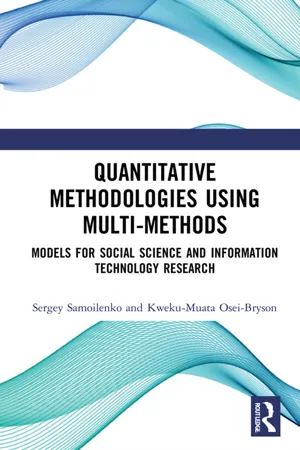INTRODUCTION
Modern organizations typically operate in dynamic, competitive environments. Within this context, the critical issues of organizational survival and advancement often lead to calls for improvements in the levels of effectiveness and efficiency of performance. However, due to the relativity of the concepts of efficiency and effectiveness, productivity-driven organizations must take into consideration the performance of their competitors. This requirement is due to the dynamic nature of the business environment which will cause the levels of performance of competing organizations to change over time, and if the efficiency of the competitors has improved, then a productivity-driven organization must respond with its own improvements in efficiency.
A desired capability of an organization to successfully respond to efficiency-related challenges suggests the need, first, for an effective mechanism that allows for discovering appropriate productivity models for improving overall organizational performance and, second for a feedback-type mechanism that allows for evaluating multiple productivity models in order to select the most suitable one.
The dynamic nature of the business environment also suggests the presence of a concept that is central to a productivity-driven organization, namely, that of the superior stable configuration. Given the goal of achieving a high level of efficiency of conversion of inputs into outputs, a superior stable configuration in the context of a productivity-driven organization may imply a model of conversion of inputs into output (input–output model) characterized by a high level of efficiency.
Overall, a decision maker tasked with a responsibility of improving performance of productivity-driven organization existing within a dynamic business environment must take into consideration internal (organizational) and external (environmental) factors. Similarly, if a decision making is to be added by an Information System, then the designers of such system must implement two sets of functionalities: externally oriented and internally oriented. The externally oriented functionality is directed toward evaluating the external competitive environment of a productivity-driven organization, as well as identifying the differences between the current state of the organization and the states of its competitors. The internally oriented functionality, on the other hand, is directed toward the optimization of the level of productivity of the organization, as well as toward an identification of the factors impacting the efficiency of the input–output process.
In this chapter, we will describe a decision support system (DSS) that allows assessing and managing the relative performance of organizations. Specifically, we focus on organizations that consider the states of their internal and external organizational environment in the formulation of their strategies, such that the achievement of an organizational goal is dependent on the level of performance that is commonly measured in terms of the levels of the efficiency of utilization of inputs, effectiveness of the production of outputs, and efficiency of conversion of inputs into outputs.
DESCRIPTION OF THE DSS
The focus on the efficiency assessment suggests that an important component technique of the DSS is data envelopment analysis (DEA). However, other techniques are also required for providing answers to several questions that are relevant to the organization's search for the productivity model that is most suitable with respect to survival and advancement. Next, we outline how a DSS could be implemented using a combination of parametric and non-parametric data analytic and data mining techniques including DEA, cluster analysis (CA), decision tree (DT), neural networks (NN), and multivariate regression (MR).
Let us discuss how each of the above mentioned methods, alone, or in combination with other methods, could be used in the DSS. First, we will discuss externally oriented functionality.
EXTERNALLY ORIENTED FUNCTIONALITY
CA allows for segmentation of the data set into naturally occurring heterogeneous groups. An application of this method allows for detecting the presence of multiple disparate groups of competitors in the external business environment. A decision maker can also determine whether the clusters comprising the data set differ in terms of the relative efficiency of utilization of inputs or production of outputs – DEA will help in this regard. By specifying a DEA model and running the analysis, we can obtain scores of the relative efficiency for each cluster, as well as see how the scores differ between the clusters.
If the data for the same group of competitors available for two points in time, let us say, Year 1 and Year 2, then a decision maker can obtain insights regarding possible changes in the number of clusters, as well as changes...
